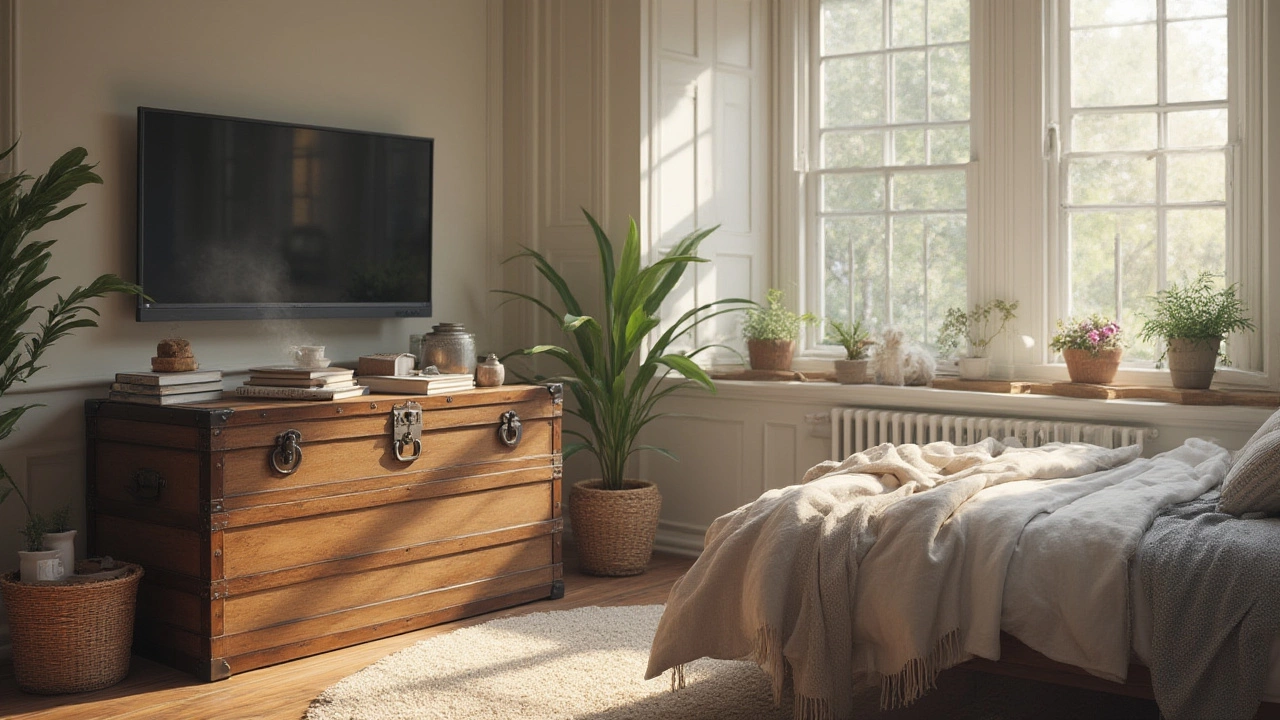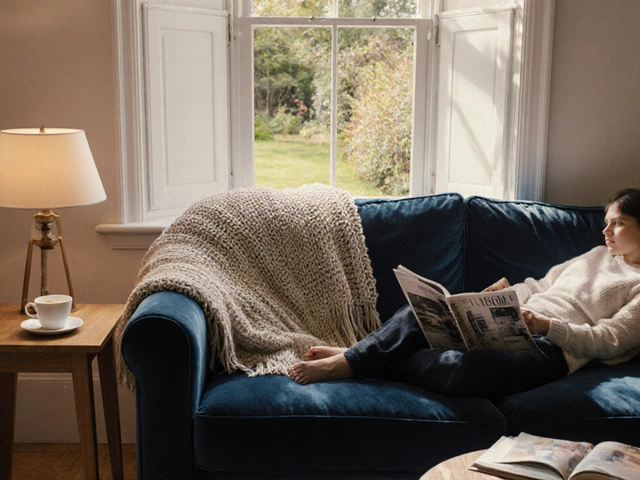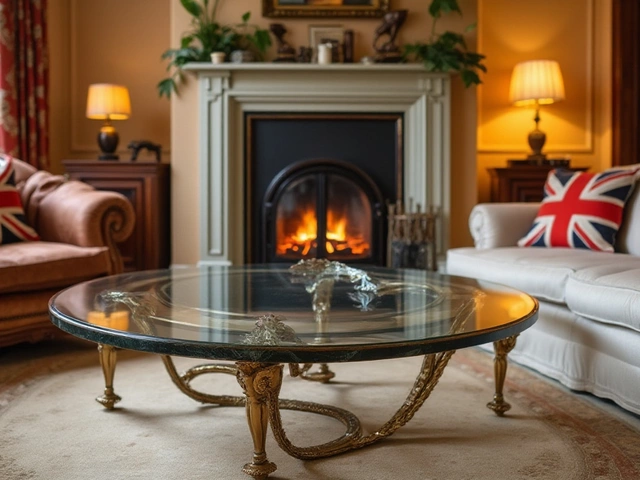Ever notice how the typical TV stand just never seems quite right in a bedroom? Maybe the space feels too cramped, or the style doesn't exactly vibe with the rest of your room. You’re not stuck with clunky furniture or dull designs—far from it. Your bedroom TV deserves as much attention as your living room setup, and you don’t have to break the bank or sacrifice floor space to get it right. With a pinch of creativity and a dash of smart planning, just about anything can become a TV stand.
Everyday Furniture in Disguise: Repurposing for Style and Function
Let’s talk about reimagining the stuff you already have. Dressers, sideboards, bookshelves, or even the humble storage bench can easily step in as a TV stand. Got a low, sturdy dresser? That’s a TV stand with bonus storage for socks and pajamas. A waist-high bookshelf isn’t just for novels; slot in a few baskets, tuck away remotes, and give your screen a stylish home. Some people even use vintage trunks or old chests—solid, classic, and instantly more interesting than something straight out of a box store.
Double-duty furniture is a hero in small bedrooms, where every inch counts. A console table behind the foot of your bed can lift the TV to perfect eye level and create separation without crowding your space. If you find a bench sturdy enough, pop your TV on top and slip shoes underneath, or line up baskets for a cleaner look. Floating shelves aren’t just a Pinterest trend—they’re a real space saver. You can even install a thick floating shelf as a minimalist base for your TV. Many floating designs hold up to 50 lbs, but always check your wall for proper support (and use those wall anchors!).
Now, if you want your TV out of sight and out of mind, think about armoires or cabinets with doors. People have been hiding TVs in wardrobes for decades, and modern designs now allow those doors to fold all the way back or slide into the cabinet, so nothing’s awkwardly blocking your show. IKEA’s BILLY bookcases and KALLAX cubes? With some simple hacks, they transform into sleek stands that also help with clutter. You can get creative with paint, hardware, and even peel-and-stick wallpaper. Suddenly, your stand looks custom-made.
Here’s a quick look at how some of these pieces compare for repurposing as a TV stand:
| Furniture | Typical Load Capacity | Bonus Features |
|---|---|---|
| Dresser | 80-150 lbs | Drawers for clothes/gear |
| Bookshelf (3 shelf) | 50-80 lbs | Open shelves for decor, baskets |
| Storage bench | 200+ lbs (seat weight), 80 lbs (top) | Hidden storage or shoe racks |
| Floating shelf (thick) | 30-50 lbs | Minimal footprint |
With a bit of creativity, almost anything flat and sturdy becomes a TV stand. Just remember: measure twice, move once. Always make sure your screen is safe—nothing too wobbly or top-heavy. The TV stand alternatives people are turning to now aren’t just functional—they actually look good, and you’re not spending extra cash if you don’t want to.
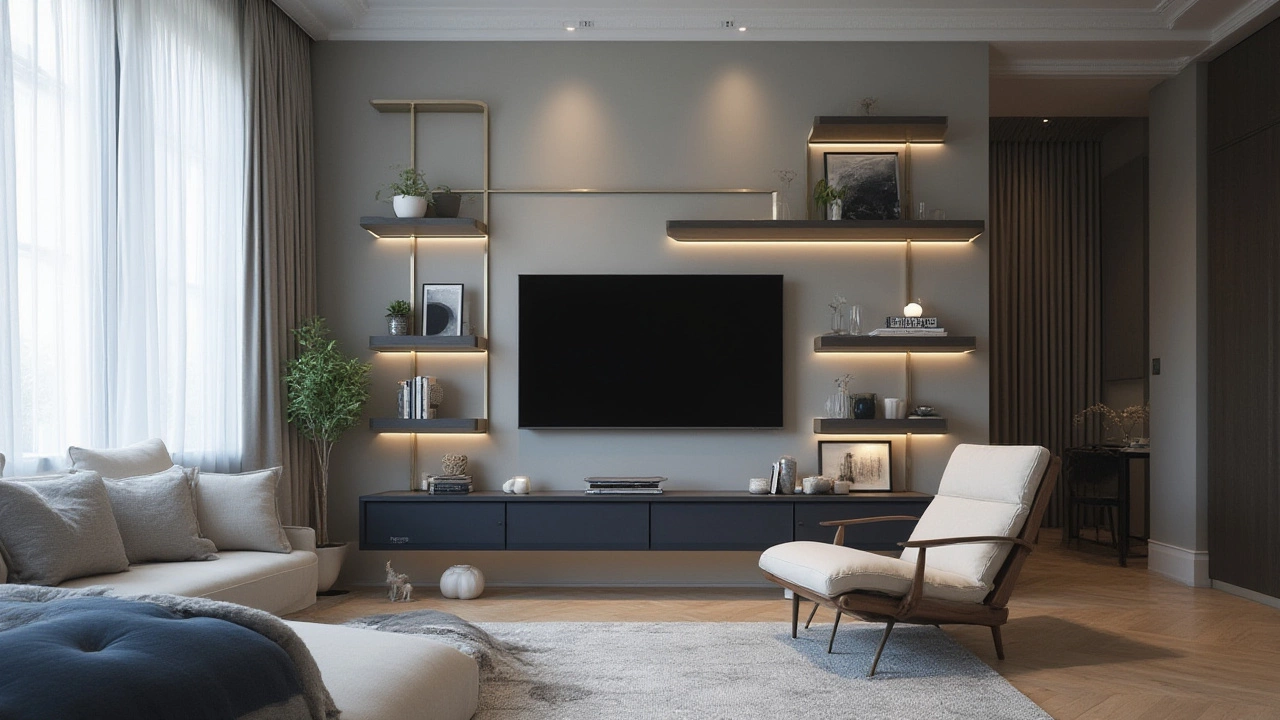
Ready-Made Stands and DIY Upgrades: Finding the Right Fit
If you really want the classic look, TV stands still come in all shapes and sizes. They range from ultramodern metal frames to classic wood consoles with glass doors. Key is matching your bedroom’s vibe. If you’ve got a cozy boho setup, rattan stands or retro wood credenzas can make your room pop. For ultra-modern bedrooms, look for clean lines, glossy finishes, or stands with built-in LED lights beneath. Industrial style? Go for black metal with rustic wood details—it’s like a warehouse loft vibe but scaled down for your bedroom.
But you don’t have to settle for something straight from the catalog. Want it really personal? Build or upcycle something. A pallet board TV stand is budget-friendly and all over YouTube—just sand, stain, and stack to your liking. Old ladders can work too: stand one against the wall, add a few wooden planks across the rungs, and you’ve got quirky shelves with your TV on top. A quick trip to a flea market can uncover furniture ripe for a glow-up; think old credenzas, filing cabinets, or even sturdy side tables begging for a second life.
For more hands-off folks, flat-pack stands are easy to assemble, and many are designed specifically with bedrooms in mind—compact, light, with storage for gaming consoles, routers, or streaming boxes. Designs like those from Wayfair, IKEA, and Target often fit beds up to queen size and sit at just the right viewing height. If you’re worried about floor space, check out corner TV stands. These are shaped for that awkward angle where two walls meet and help you make the most of every square inch.
- TV stand alternatives can save space and add character
- Customization is simple with paint, hardware, or even wallpaper strips
- Check the stats: a 43-inch flat-screen weighs about 18 lbs—most sturdy furniture can handle that
- Measure your TV’s width and stand depth to avoid an “overhang” look
- Look for stands under 24 inches tall for a comfortable viewing angle from the bed
For storage lovers, opt for stands with plenty of closed compartments. Clutter in the bedroom is always a sore point, and hiding away remote controls, tablets, or wires helps keep the atmosphere restful. In 2024, the trend of “cord organization” keeps growing—stands with built-in cable routing or rear cut-outs make life a lot easier. Even a simple hook or twist tie can get those cables out of sight. For anyone setting up a game console or sound bar, double-check the stand’s shelf size and ventilation. Overheating gadgets can be an issue if there’s not enough airflow, and not every cheaper TV stand takes this into account.
And about those instructions—don’t ignore those weight limits. Manufacturers know what materials can handle, especially when it comes to pressed wood. If you’re ever unsure, stick to stands made from solid wood, metal, or properly rated engineered boards. Want more peace of mind? Look for furniture with anti-tip hardware, especially if you have kids or pets roaming around the bedroom.
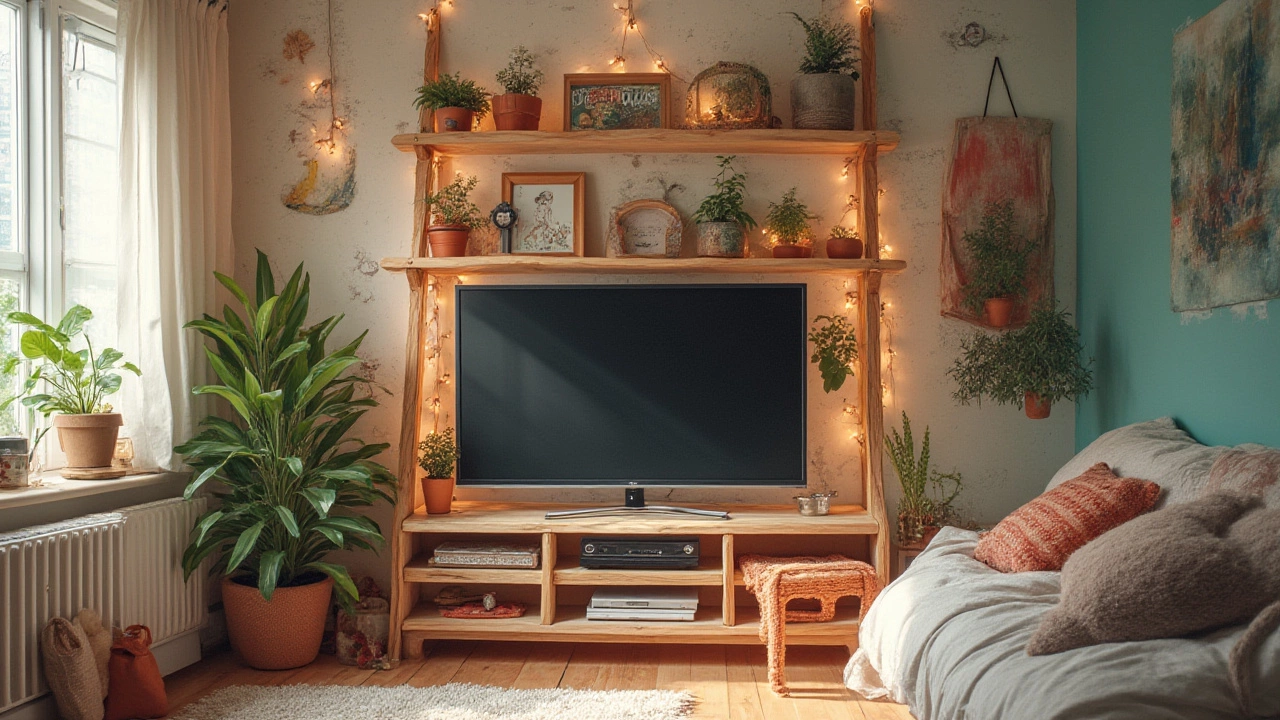
Pro Tips, Placement Hacks, and Smart Storage for Your Bedroom TV
Once you’ve found your stand (or created your Frankenstein’s monster of a setup), placement is everything. People often stick TVs wherever there’s an empty spot, but it’s worth thinking about sightlines, glare, and vibe. The ideal distance for watching a TV in bed? For a 40- to 50-inch TV, aim for 6 to 8 feet from your pillow. You don’t want to crane your neck, so keep the center of the screen at about chest level when you’re lounging. That’s usually around 24 to 36 inches from the floor, depending on your bed’s height.
Dealing with sunlight? Don’t put the TV opposite a bright window—it’ll just wash out the picture. If your room is really tight, wall-mounting is a smart fix, paired up with a slim shelf or two below for your gadgets. There are even swivel wall mounts so you can turn the screen toward your favorite cozy chair or desk. For renters, consider no-drill stands—they clamp to furniture or stand on their own without leaving marks on your wall.
Smart storage solutions can turn your TV zone into a command center for your bedroom. Try baskets for remotes and cords, small trays for headphones, or organizers designed for game controllers. Faux plant? Table lamp? Add them next to the TV for a softer look that blends tech with comfort. Layer art or framed photos above the TV, or add a gallery wall to make the screen part of the décor instead of an eyesore.
Ever thought about rolling your TV stand? Casters can be a gamechanger in tight bedrooms—move the TV to the corner by day, drag it closer for movie night. For real multi-use spaces, stands with doors let you close up and “hide” the TV so the room doesn’t feel like a mini cinema 24/7. This trick is super useful in guest rooms turned home offices, too.
Here’s a handful of little-known facts perfect for bedroom TV stands:
- In 2024, about 55% of bedroom TVs are mounted on repurposed furniture—people are ditching traditional stands in favor of unique, multi-use pieces.
- The average TV stand height in bedrooms is now two inches lower than in living rooms, reflecting the way we lounge differently in bed versus on the sofa.
- Using open shelving or glass doors can reduce cable clutter by up to 35%, according to a survey from a popular furniture retailer.
- Modular furniture (think stacking cubes or nesting tables) is on the rise, especially for apartments and small homes.
- A solid wood stand can last decades—vintage and upcycled options aren’t just eco-friendly, they outlast most particleboard stands.
If you want your bedroom to stay calm, pick a stand that tucks everything away out of sight. If you like your gadgets on show, go for open shelving and accent your setup with cool lighting. No matter what you use, the secret is picking something sturdy, safe, and adjustable for your space. There’s no single “right” answer—just the solution that feels right when you stretch out, hit play, and binge your favorite show at the end of the day.
